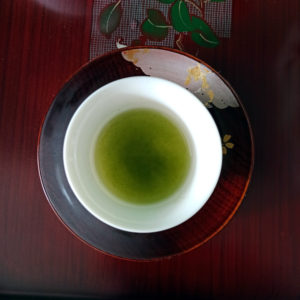While there are countless ways that you can get into Japanese green tea, here are my thoughts about it.
The first thing to keep in mind is that you should enjoy your journey.
The discovery and learning process are more important than becoming an expert.
What is your motivation?
I understand that people usually get into green tea for its health benefits.
But if that is your only motivation, you won’t grasp the essence of tea.
Tea is so much more than just losing weight and being healthy. For those goals, it might be more effective to concentrate on diet and exercise instead.
My advise is to focus on having fun.
I like to explore the aromas and flavors that Japanese tea offers, as well as its cultural and historic aspects.
If you are into wine, or any other liquor, you can probably understand.
You’ll also be able to connect with tea lovers all around the world.
Drink good quality tea
You don’t have to buy the most expensive tea out there, but I do think that drinking the low quality tea bags is a waste of time.
They just don’t offer much value. It’s mostly a flat and bitter flavor.
As a tip, I want to tell you that good quality green tea isn’t bitter.
Too much bitterness is a sign of low quality tea, or incorrect preparation.
I would also keep away from flavored teas. Because that would be like trying to learn about wine by drinking sangria.
Tasting a good loose leaf tea (or powdered tea) for the first time can be a mind-blowing experience.
You may never again go back to tea bags.
Where to begin?
If you have experience with tea, you can just follow your preferences.
But if you’re an absolute beginner, I believe that it’s good to start with genmaicha and houjicha.
Both are easy to prepare because they use boiling water, meaning that you don’t have to worry about going over the correct temperature.
They don’t get bitter easily, and the taste isn’t as intense as other green teas.
I’ve noticed that many beginners like this type of flavors at first.
Actually, I also started with genmaicha when I knew nothing about Japanese green tea.
Nowadays a lot of people start with matcha. Again, because of the health benefits.
But I wouldn’t recommend starting with matcha. It is a strong taste which can be very bitter if you have a culinary grade matcha, which is often the case.
Next steps
Once you get the hang of lower grade Japanese teas, it’s time to explore teas such as sencha and kukicha.
This time you do have to be careful with their preparation, otherwise they can easily turn bitter.
The marine, vegetal, and fresh aroma and flavor of Japanese green tea is what you will be looking for.
Of course, the umami taste is very important too.
If you don’t enjoy these, you might be better off drinking other types of tea.
In terms of learning about umami, gyokuro is the tea to try.
For matcha lovers, the best way to start learning is to try different ones of ceremonial grade.
How to improve?
It’s all about practice. Reading about it can only take you so far.
The more often you drink Japanese green tea, and if possible from different sources, the more you will learn.
You can begin to appreciate how terroir plays a role, for example.
It is at this point that you might want to invest in teaware. But if your budget is limited, it’s always better to concentrate on tea instead.
Once you advance, you can start to explore Japanese teas made from different cultivars. This mostly happens with sencha.
Single cultivar teas offer a greater variety of flavors and aromas.
When I try a single cultivar, single estate (meaning from a specific tea field) sencha that I had never tasted before, I feel like a total beginner.
This happens to me very often.
Learning about Japanese green tea is a never ending journey, but it’s very much worth pursuing.

